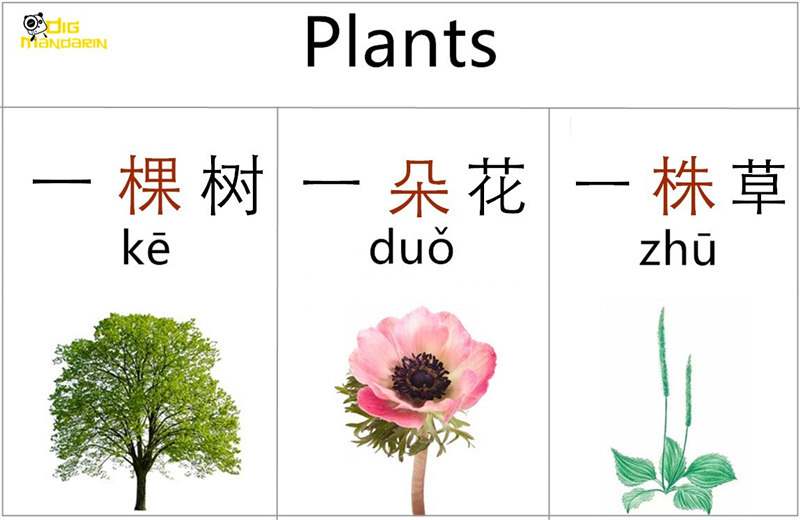Chinese Measure Words (Part 1): People, Animals, Plants
- Introduction & Full List
- Part 1: People, Animals, Plants
- Part 2: Size & Shape, Wrapped Items
- Part 3: Events, Buildings & Structures
- Part 4: Foods, Household Items, Clothing
- Part 5: Pairs, Groups, Collections
- Part 6: Speech & Writing, Machines & Vehicles
- Part 7: Time, Units of Measure
People:
个 (個) | gè | person, thing | 一个人 (yī gè rén) “a person” 五个小孩 (wǔ gè xiǎohái) “five children” The character actually contains the symbol for person, but this measure word is used not only for people, but any other thing that doesn’t have a more appropriate measure word (or it does but we cannot remember it). 一个东西 (yī gè dōngxī) “a thing” 举个例子 (jǔ gè lìzi) “give an example” 解决个问题 (jiějué gè wèntí) “resolve a problem” |
|---|---|---|---|
| 位 | wèi | person | More respectful than 个, and used only for people. 一位女生 (yī wèi nǚshēng) “a woman” 一位男生 (yī wèi nánshēng) “a man” 三位老師 (sān wèi lǎoshī) “three teachers” |
| 名 | míng | person, professional | 名 means “name”. Typically used when naming a person’s occupation. 一名医生 (yī míng yīshēng) “a doctor” 三名律師 (sān míng lǜshī) “three lawyers” When used as a measure word,名 can always be substituted with 位. |
| 口 | kǒu | dependent | 口 means “mouth”. As a measure word, it is rarely used in speech. 六口家眷 (liù kǒu jiājuàn) “six dependents” |
| 具 | jù | corpse | 具 here describes something concrete or stiff. 一具尸体 (yījù shītǐ) “a corpse” |
| 戶 | hù | household | 十戶人家 (shí hù rénjiā) “ten households” |
Animals:
只 (隻) | zhī | animal | 一只鸟 (yī zhī niǎo) “a bird” 一只狗 (yī zhǐ gǒu) “a dog” 一只象 (yī zhǐ xiàng) “an elephant” |
|---|---|---|---|
头 (頭) | tóu | livestock | 一头猪 (yī tóu zhū) “a pig” 一头牛 (yī tóu niú) “a cow” 头 means “head”, you can think of it as “a head of cattle” |
| 匹 | pǐ | horse | 一匹马 (yī pǐ mǎ) “a horse” |
条 (條) | tiáo | fish, snakes | 一条鱼 (yītiáo yú) “a fish” 一条蛇 (yī tiáo shé) “a snake” In contrast to the above measure words, 条 refers to the shape of the animal. We will see条in the Size & Shape category. |
Plants:
| 棵 | kē | tree | 一棵树 (yī kē shù) “a tree” The character’s left side is the symbol for “wood” |
|---|---|---|---|
| 株 | zhū | plant, flower still in the ground | 一株花 (yī zhū huā) “a flower” |
| 朵 | duǒ | flower bulb or stem | 一朵玫瑰 (yī duǒ méiguī) “a stem of rose” |








Just to say Thank you for listing everything down. So complete it’s amazing!